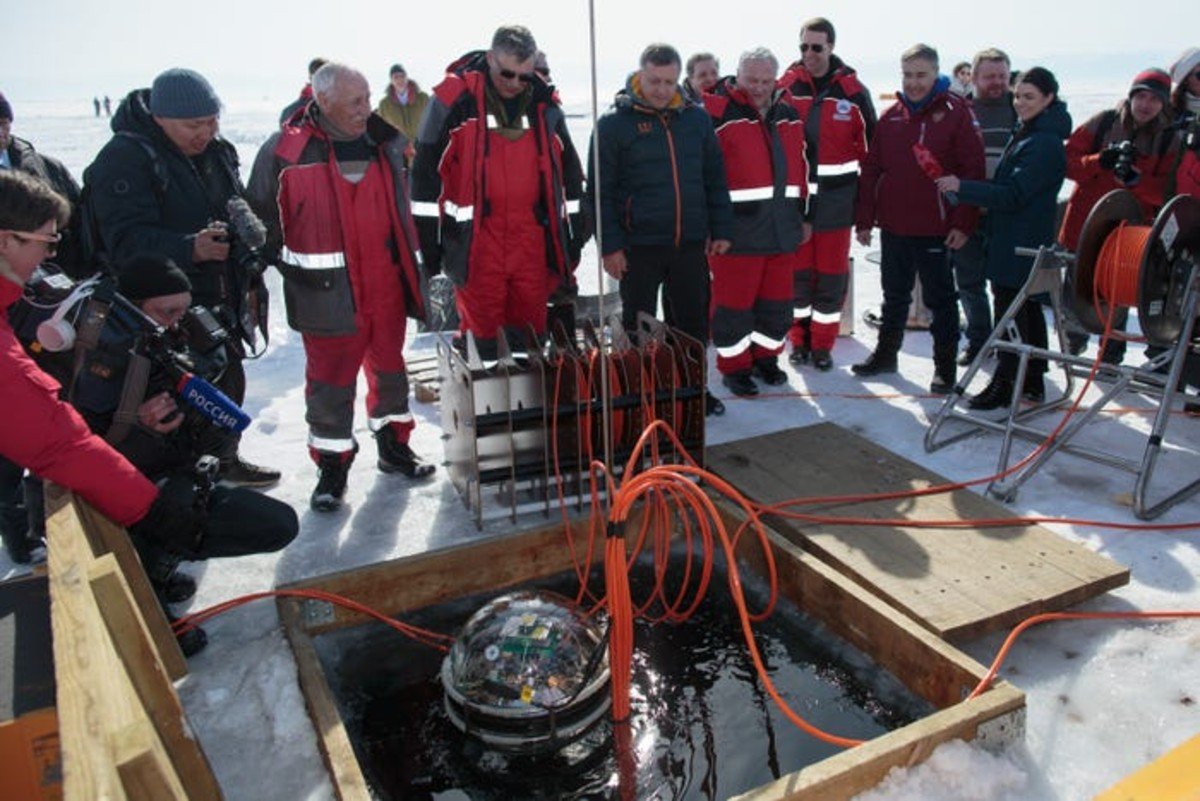Baikal-GVD will aid scientists in their research into the origins of the universe.
Russian scientists sank a series of detectors between 2,500 and 4,300 feet beneath the surface of Lake Baikal over the weekend (via Phys.org). The Baikal-Gigaton Volume Detector, the northern hemisphere’s largest underwater space telescope, is made up of several sensors. It will aid scientists in their research on neutrinos. Neutrinos are the smallest particles currently known to humans, despite being one of the most prevalent particles in the cosmos. They can also travel long distances without colliding with other particles. They are difficult to detect and analyze because of these qualities, but they can teach us a lot about the universe’s history.
Construction on Baikal-GVD began in 2015 as a collaborative project involving Russia, Germany, Poland, Slovakia, and the Czech Republic. The real “telescope” is made up of hundreds of spherical glass and stainless steel modules joined to the surface via cables. Those sensors currently take up 17,657 cubic feet of space. The telescope will grow in size as more sensors are added over time.
Why would they install such units underwater? Because it’s a good medium for detecting neutrinos, and Lake Baikal has many of them. It is one of the world’s largest and deepest freshwater lakes, located in South Siberia. It’s also immaculate and frozen for at least two months of the year. Lake Baikal is one of the few spots on the planet that is suited for this type of research. The IceCube Neutrino Observatory in Antarctica and the ANTARES telescope deep beneath the Mediterranean Sea are the only two other telescopes of comparable size.


